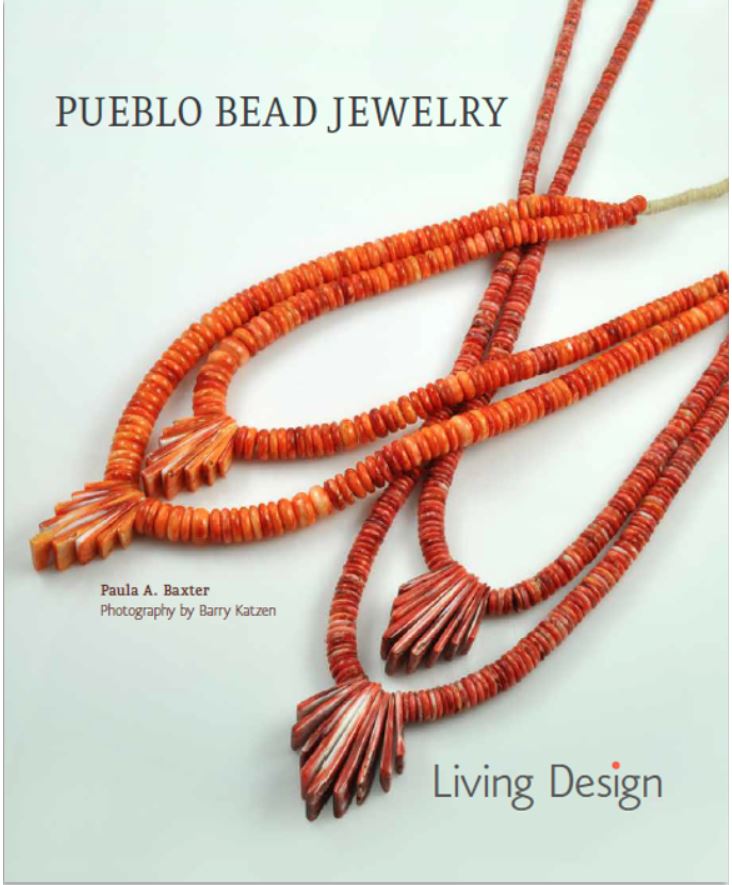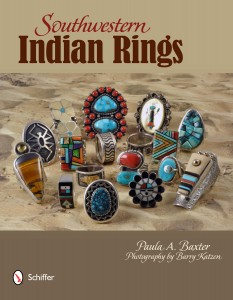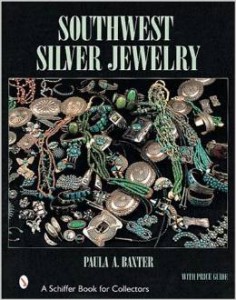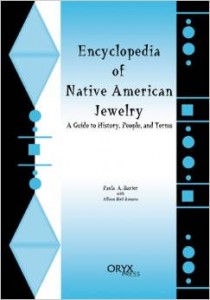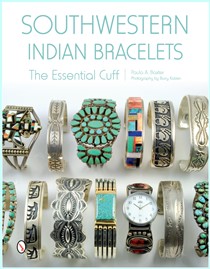Public and popular culture recognition of the role Beadwork plays in Native American personal adornment was furthered by an influential exhibition “And the Bead Goes On!” at the San Diego Museum of Man. Held from April 1965 to February 1966, this exhibition reintroduced to the public the exquisitely detailed effects of beading. The curators drew careful distinctions between beadwork made solely for Native wear and items developed for sale to others.
Fact: This exhibition was important because it reinforced the understanding that Native artists have always retained creative control of their work. (See the exhibition catalog here.)
Beadwork is a living art, and the main market for beadwork ornament continues to be Native peoples themselves. They value beadwork items for personal use, dance decoration, and ceremonies. However, non-Native interest in beaded jewelry has grown extensively since the 1960s. Beaded trinkets were considered tourist goods throughout the early-to-mid twentieth century, and such items are still good souvenir purchases. Inter-tribalism has promoted beadwork as well, placing beads on everything from moccasins to tennis sneakers.
Fact: Indian traders establishing themselves around the Navajo reservation bought glass beads from Europe and these became known as trade beads.
I’m not letting go of the Beadwork topic for a bit yet! When discussing this term, there is an innate love of beauty in the bead jewelry made in the Southwest. It can be in the masterpieces of Natives whose tribes aren’t local, like Marcus Amerman and Keri Greeves, yet who sell well in the regional arts marketplace. It can be in the fanciful beading done by Navajo artists, work with a style of its own. But most of all it is in the hands of Pueblo jewelers like Veronica and Jovanna Poblano, Sharon Abeyta, Kenneth Aguilar, Jolene Bird, Charlene Reano and many others, that we see inventiveness at its finest.
Fact: While Pueblo shell and stone beadwork draws acclaim in its own right, Pueblo artists working in silver make some of the very best beads out there.
Now that I am done grousing, the beauty and variety of Beadwork out there in Indian Country is fantastic. Old beadwork is valuable and many examples can actually be seen in the notable early photography of Curtis, Moon, and others. Native people wore their beads, many strands at times, mingling shell, stone, and silver as metalworking entered their repertoire of skills. Fine beadworking was a lure for other tribes in the region, riding to the trade fair at Taos Pueblo and other sites.
Fact: Beadwork was not just for personal adornment but could have symbolic and ceremonial purposes as well.
And now I come to Beads or Beadwork. This artistry spans all the geographic regions of Native culture. The Pueblo Indians of the Southwest, however, have special abilities when it comes to making beads for adornment. But beadwork in the Southwest expands far beyond that particular heritage. One concern I always have relates to the fact that many Natives make beadwork from trade kits with plastic and other phony materials. Such beadwork then gets sold at highway rest stops and near national parks, monuments, and other beauty stops. Tourists zooming through Indian Country can get the impression that this low-level ornamentation is real “Indian jewelry.”
Fact: Junky beads made from commercial kits are NOT “Genuine Indian jewelry.” It’s commercial jewelry made by Indians … Okay?
Adolph Bandelier (1840-1914) was a Swiss-born emigrant to the United States. He studied under the pioneering anthropologist Lewis Henry Morgan and began to focus his scholarly attention on the Native peoples of the American Southwest, Mexico, and South America. Bandelier National Monument in New Mexico is named for this dreamy scholar who combined archaeological and ethnological work.
Fact: Like many white men active in the late 19th century, Bandolier romanticized the ancient peoples he’d investigated, and his book The Delight Makers imagines what life was like for the Ancestral Puebloans.
Have you ever seen a prime bandolier bag? They are an important form of Native American masculine dress and an interesting example of material culture. The bandolier bag has a long strap and was slung over the shoulders and across the chest. The pouch part could be used for storing gun cartridges or materials for medicine men to use in ceremonies and healing. Navajo and Pueblo wearers of these bags would sometimes decorate them with German silver or stone ornamentation.
Fact: Bandolier bags with metal ornaments occasionally appear on the antique Indian arts market, and need to be vetted carefully to be sure they are not reproductions.
A badger is something most likely to be found rurally, if not at a University of Wisconsin-Madison football game, where team mascot Bucky the Badger struts his stuff. For Southwestern Natives, the badger is a significant animal, serving, among other things, as guardian of the South for Zuni’s six directions fetish images. A fierce burrower, the badger is hailed for its aggressiveness, single-minded persistence, and love of control.
Fact: Hopi master jeweler Charles Loloma utilized the badger paw as a personally meaningful design for his creations, since he was a member of the Badger Clan.
Backing is the material that is placed behind set-in stonework in jewelry. Native backing varies from that employed by non-Native jewelers. While most jewelers work with black epoxy applied to settings to strength thin stones, many lapidaries cut their stones thicker and so don’t require conventional backing.
Fact: Vintage era Native jewelers have improvised with found materials like sawdust, cardboard, and paper (from thin tissue to newspaper) as backing in order to level stones, often because they couldn’t afford commercial backing materials.
Want to know a great Christmas collectible? Zuni beaded animal and doll ornaments. I’ve been collecting them for years and they brighten any tree out there, real or fake. These items are still inexpensive and they stand the test of time well. I’ve got one that are nearly thirty years old and they look identical to new pieces. Next time you’re in Gallup or Ganado or any of the posts or shops serving the Zuni area, stock up on these items.
Fact: Ho, ho, ho your way to the holidays with this seasonal reminder of a great American folk art.
